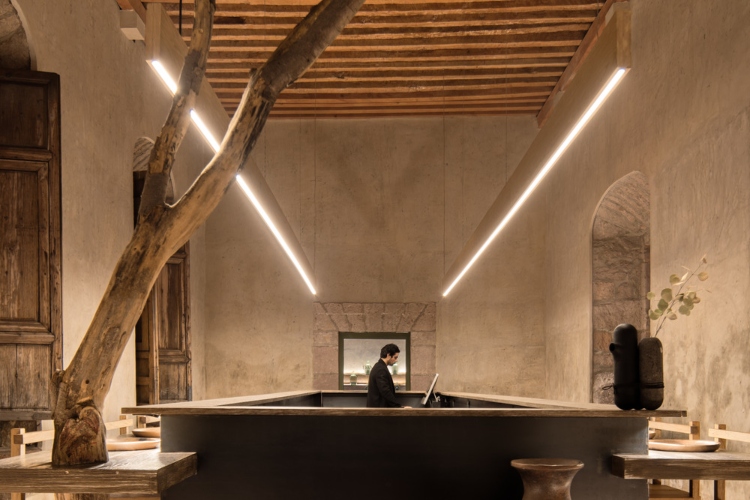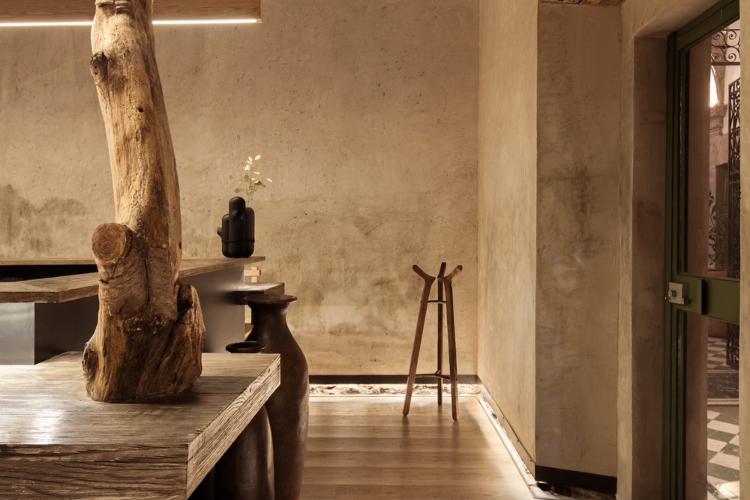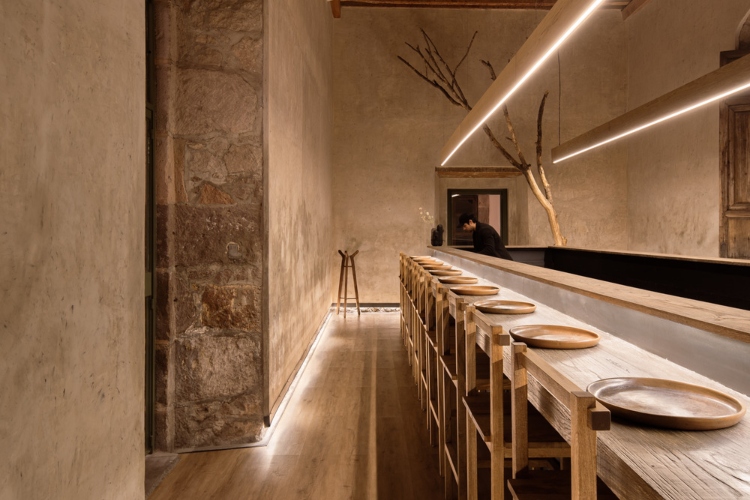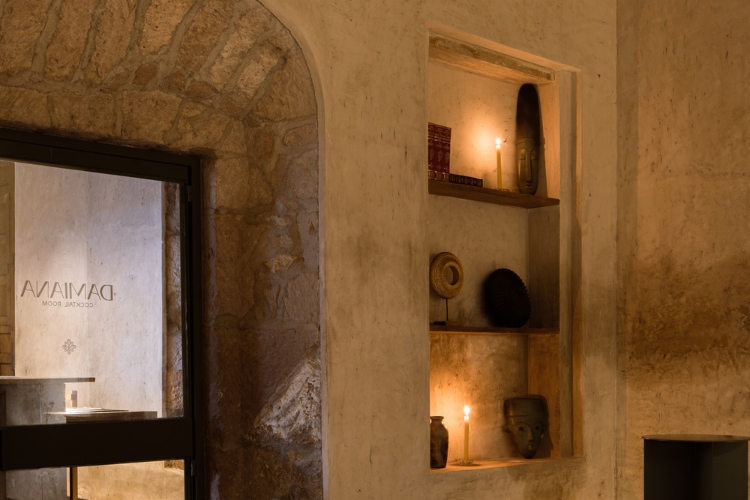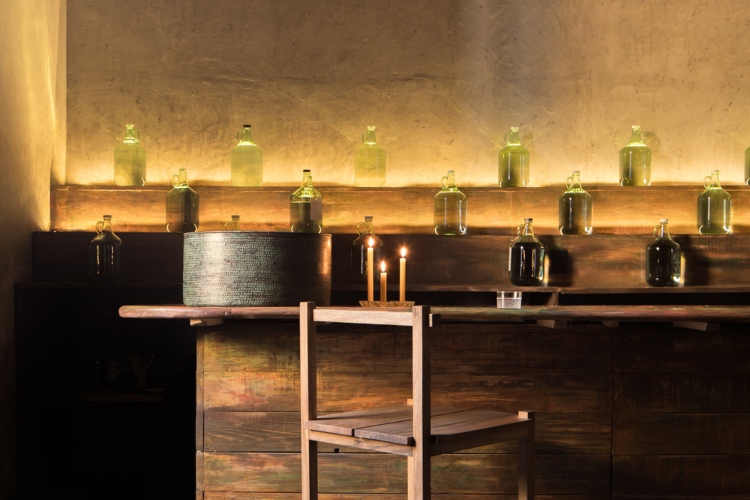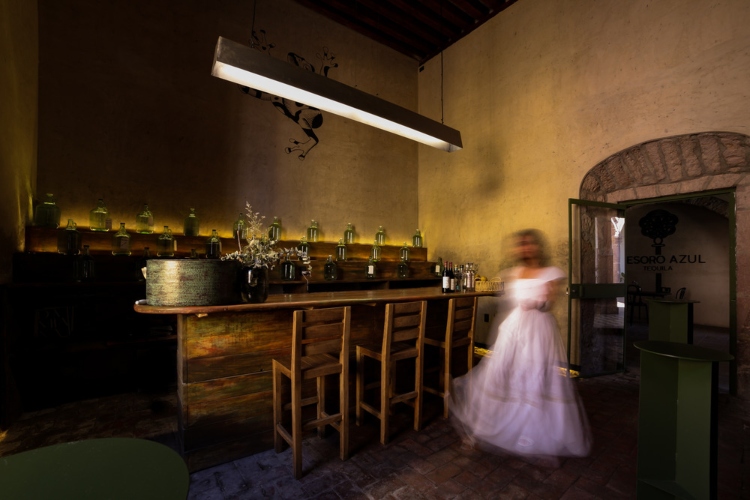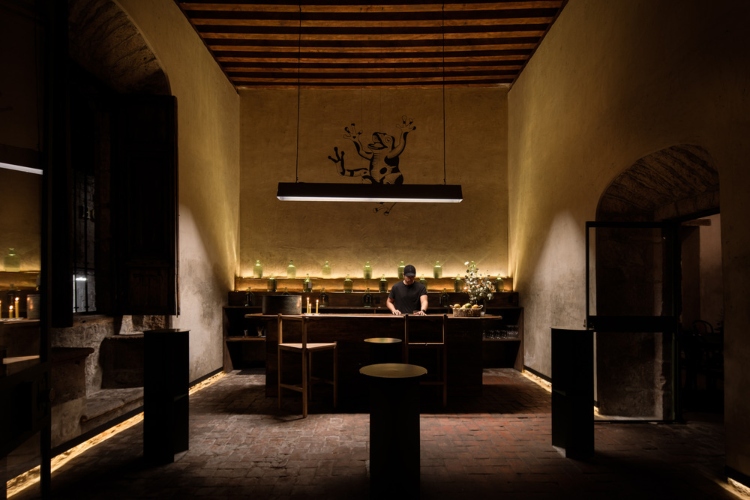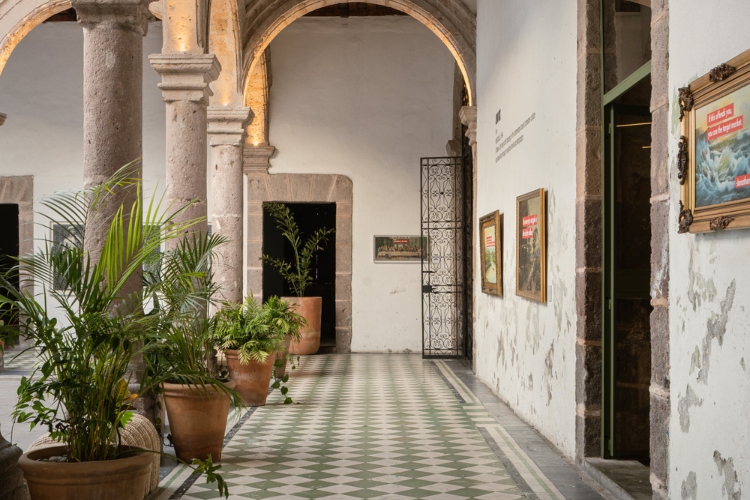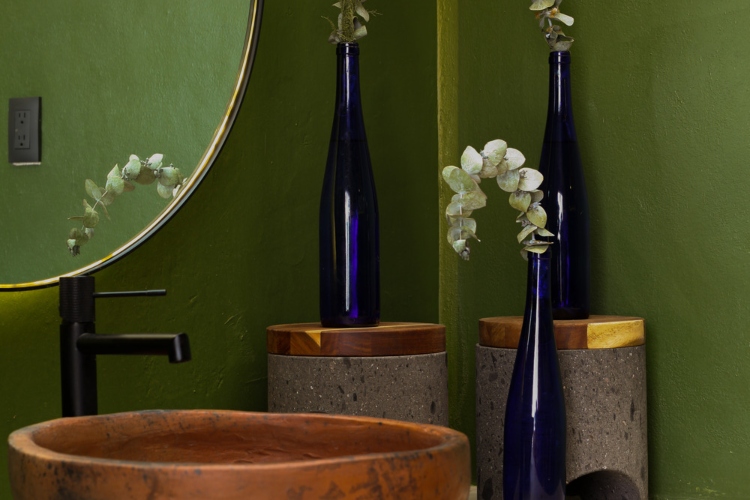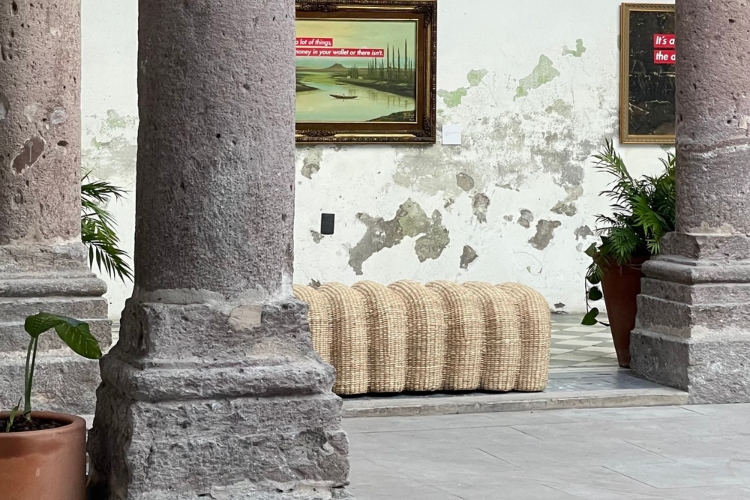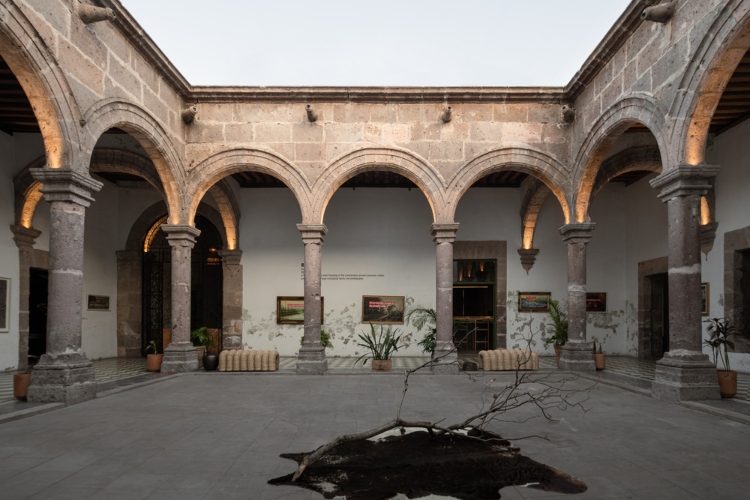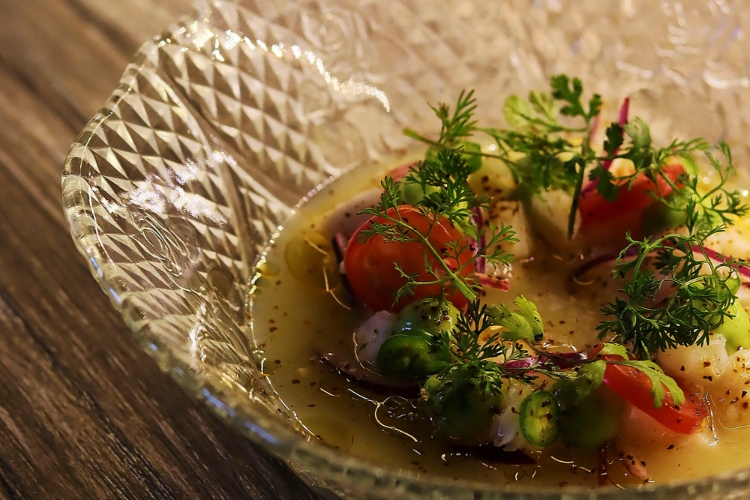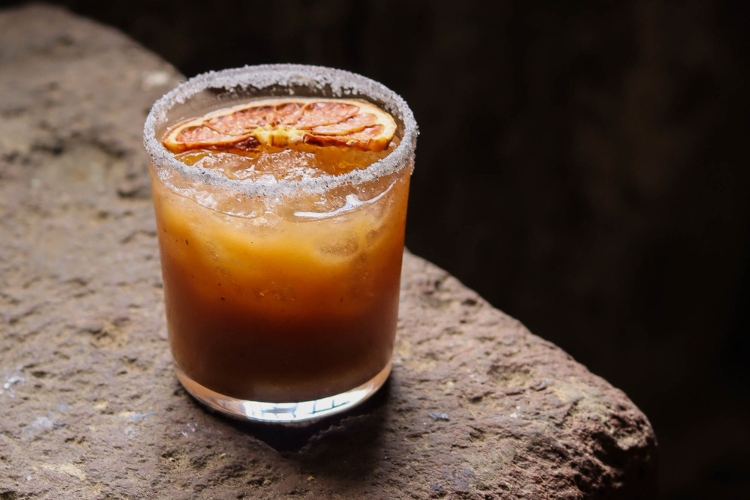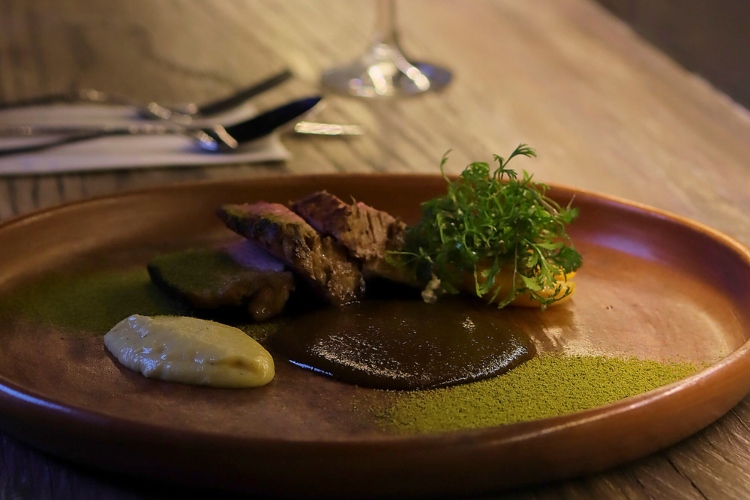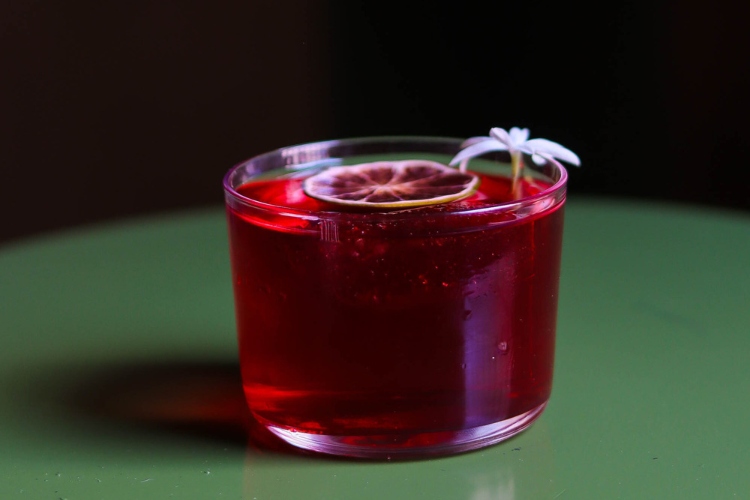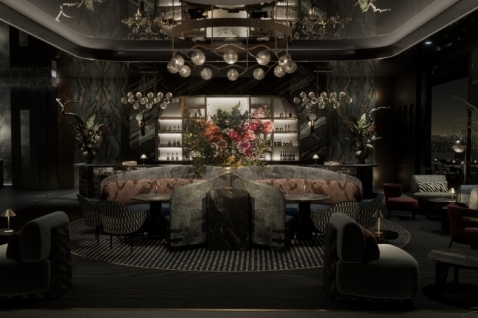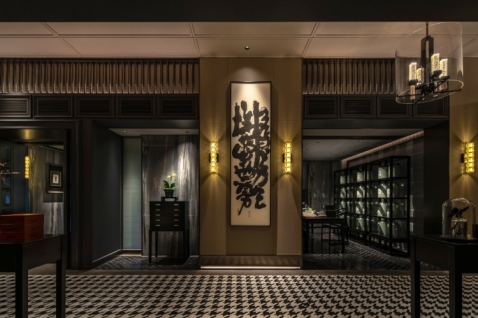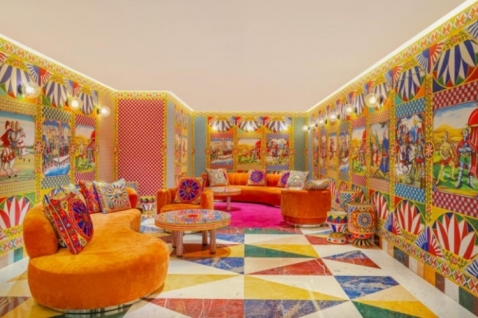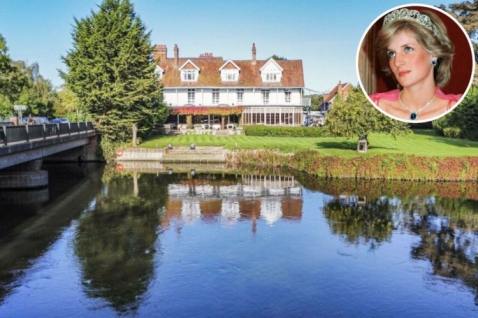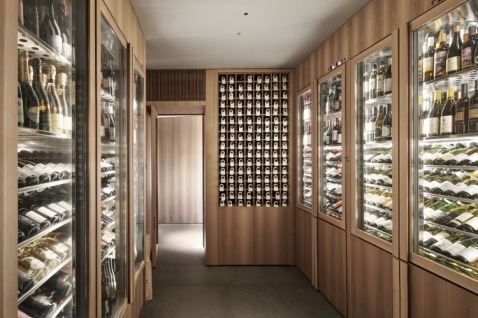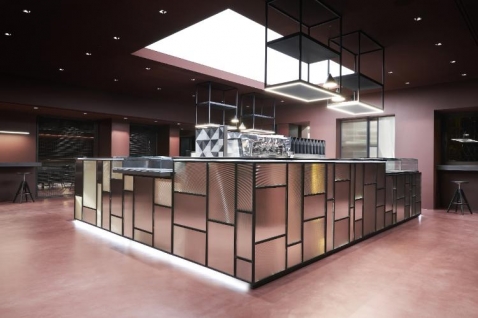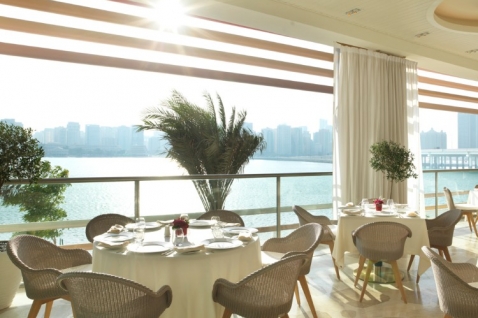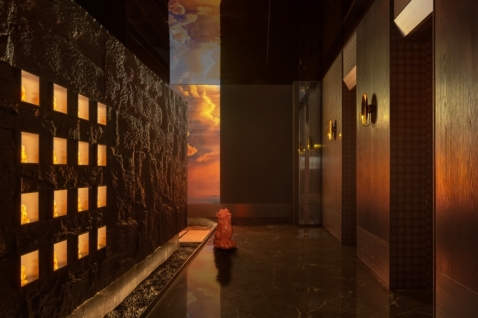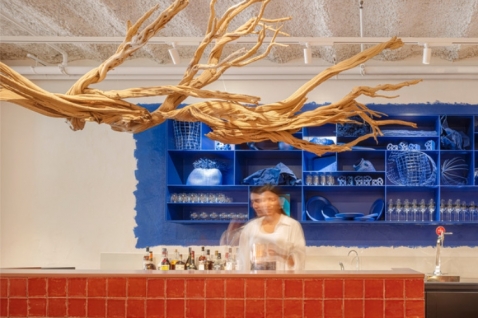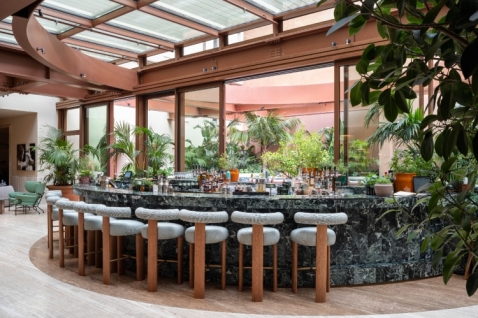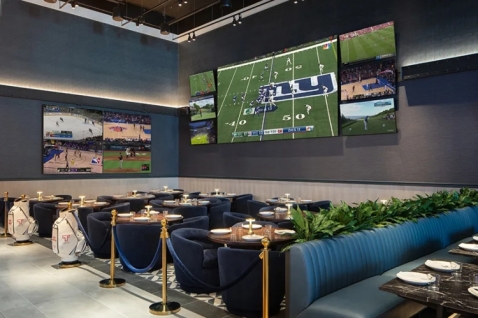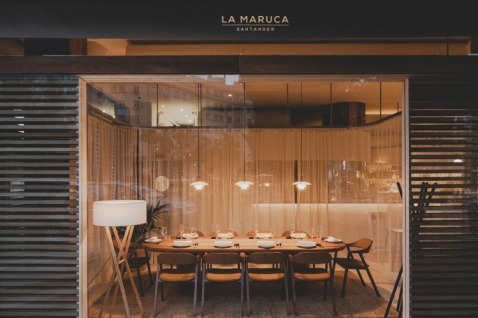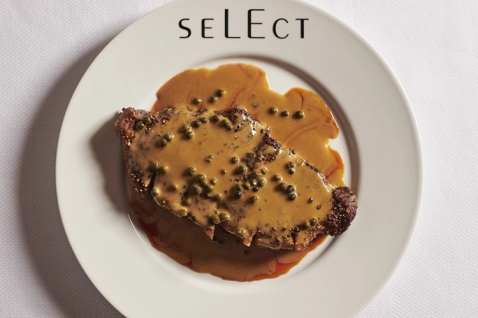More photos
FMA presents Josafat Zalapa, a culinary haven that harmoniously blends the culinary heritage of Mexican culture with Oriental influences, nestled in a 19th-century house in the heart of Morelia...
The founding concept of the restaurant is rooted in creating a revolutionary dining environment inspired by the Japanese term 'Omakase,' encompassing the essence of 'I trust you' or 'chef's choice.' Through an exclusive dining experience, guests embark on a gastronomic journey, actively participating while witnessing the preparation of their dishes.
The user experience begins with access to the historic building, where visitors are greeted by a corridor and gallery leading to a cloister adorned with various artworks along its perimeter. In the center, a sculptural piece with dead plants alludes to the passage of time within the building.
The architectural layout comprises two rooms adjacent to the courtyard, surrounded by Baroque architectural elements. The main space features a sculptural bar with 20 designer chairs, while the other room with a bar subtly reveals itself on one side. Upon entering the restaurant, massive stone walls envelop the central part of the project: the extended bar where guests gather around the chef, preparing for a culinary spectacle.
Through interior design, the project strikes a balance between the architecture of the past and contemporary elements expressed in furniture, decor, and materials. This approach creates an introspective, elegant, and sophisticated atmosphere.
The bar concept further emphasizes the dishes prepared by the chef, while indirect lighting along the edge of the floor frames the existing walls. This lighting highlights the layers of history preserved over time, emphasizing their architectural value.
The design premise revolved around respecting the architecture of the place while subtly intervening in the interiors, achieving a timeless proposal that seamlessly integrates with the historical layers of the building. The choice of materials remained essential, including wooden floors and cement pigments on the walls.
Throughout the intervention, special emphasis was placed on lighting design and furniture integration. This led to the customized design of each element, from linear lamps that accompany the bar to the chairs on which guests will enjoy their meals.

